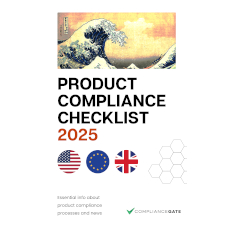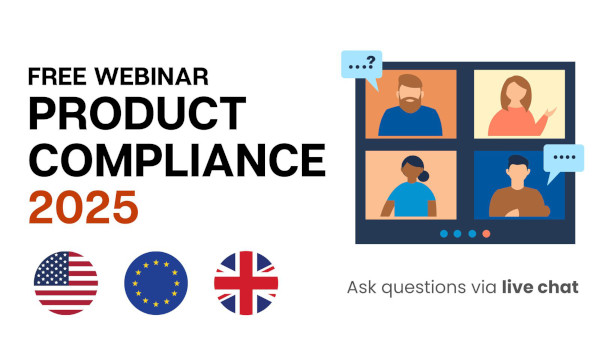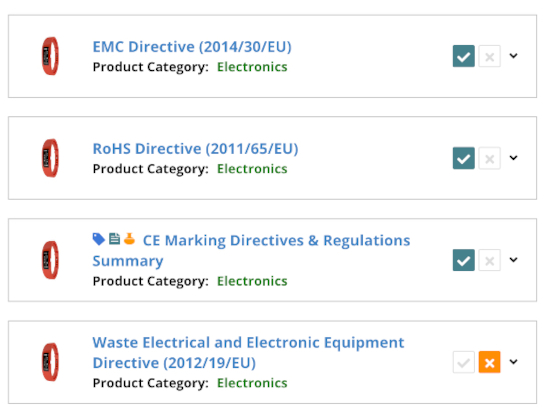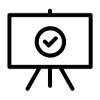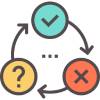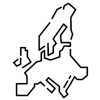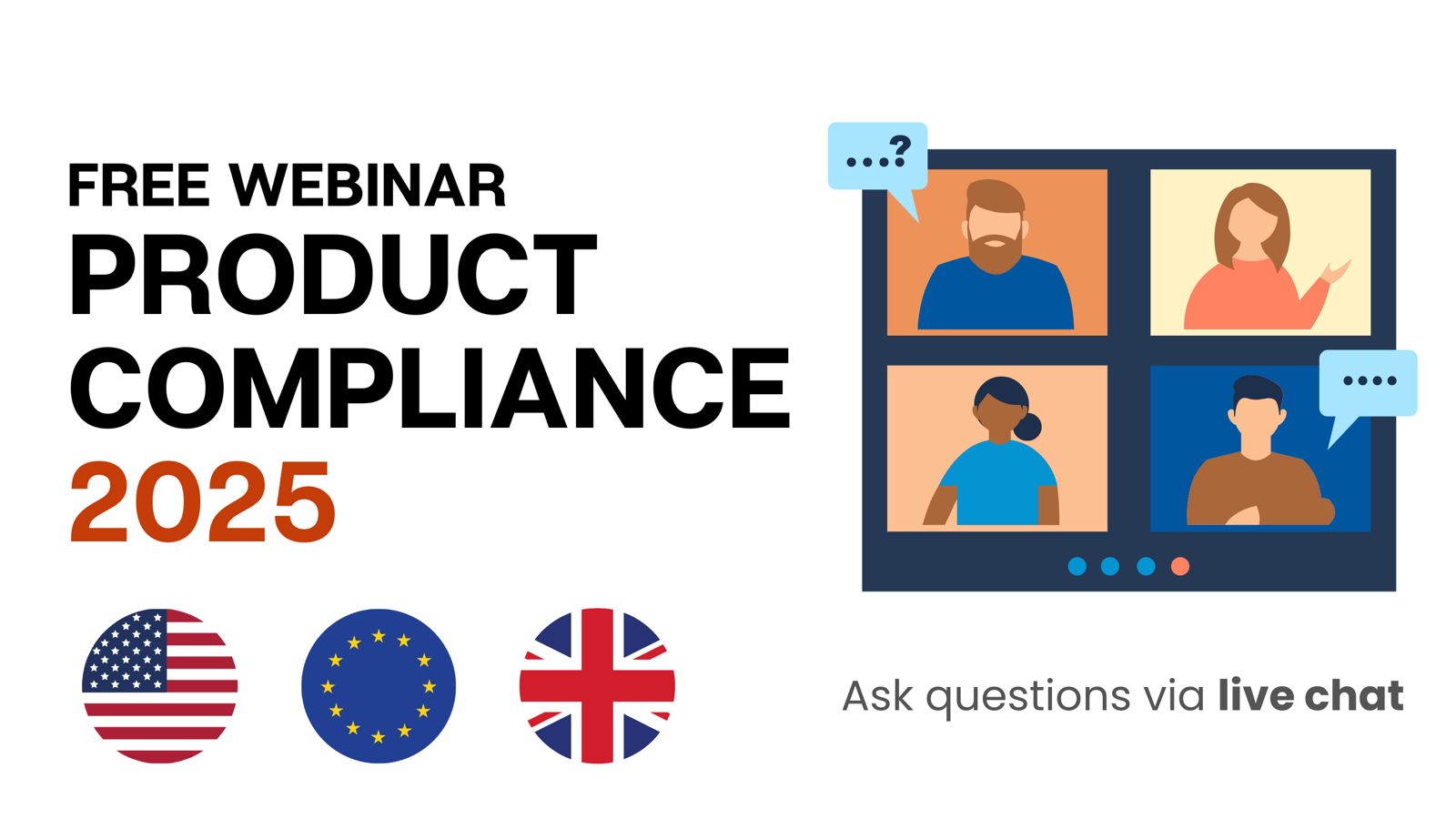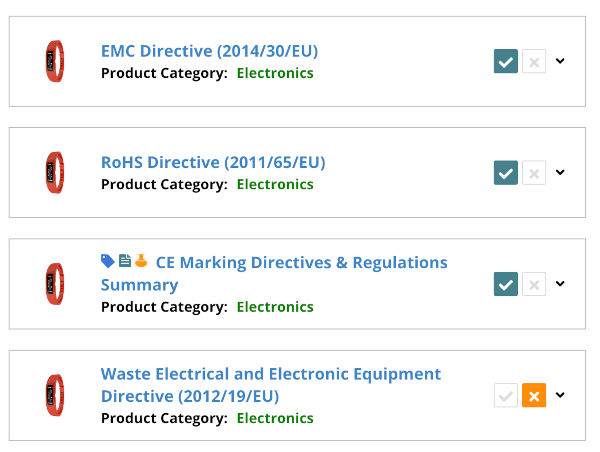
Fishing gear is subject to several requirements in the European Union. For example, the Single-Use Plastics Directive aims at reducing the impact of fishing nets and other products on the environment. Conversely, the REACH Regulation restricts several dangerous substances in fishing cages and similar articles.
This guide explains how regulations such as the ones mentioned above apply to fishing gear in the European Union, by setting extended producer responsibility, testing, labelling, and other requirements.
Content Overview

FREE CONSULTATION CALL (US, EU & UK)
- Request a free 30-minute call with Ivan Malloci to learn how we can help you with:
- Find product requirements
- Certification and labeling
- Lab testing
Single-Use Plastics Directive
The Single-Use Plastics Directive aims to reduce the impact that the following types of products have on the environment (especially the aquatic environment):
- Single-use plastic products listed in the Annex
- Products manufactured from oxo-degradable plastic
- Fishing gear that contains plastic
The directive also applies to waste fishing gear.
Fishing gear refers to fishing or aquaculture equipment used to catch marine life, including items that float on the sea surface. Waste fishing gear refers to disposed of, abandoned, or lost fishing equipment, including its components, materials, or substances.
Although we could not find examples of covered gear in the directive, we found a proposal from 2018 that explains that the directive should aim at reducing the impact on the environment of fishing gear that is lost or abandoned, such as:
- Fishing nets
- Fishing traps
- Fishing pots
- Fishing lines
This guide focuses on the requirements for fishing gear only, not the other products covered by this directive.
Extended producer responsibility
The directive requires EU member states to ensure that producers of plastic fishing gear finance the separate collection of their waste fishing gear. Note that, according to the directive, a producer is a legal entity that manufactures, imports or sells covered products.
In order to fulfil their extended producer responsibility obligations, producers can join a compliance scheme in the country where they sell their fishing gear.
One such compliance scheme is Fiskekretsen AB, which is a Swedish producer responsibility organisation that helps companies fulfil their extended producer responsibility obligations. For instance, Fiskekretsen AB establishes collection stations within municipal recycling centres for companies to drop off their waste fishing gear that contains plastic.
The directive also requires producers of fishing gear containing plastic, as part of their extended producer responsibility obligations, to cover the costs of awareness-raising measures. We do not know if these measures, referred to in Article 10, are already in place, as we could not find any information about them.
Harmonised standards
The Single-Use Plastic Directive states that the European Commission should request EU standardisation organisations to create harmonised standards for the circular design of fishing gear and to promote reuse and easy recycling at the end of its life.
We found six of these standards on the CENCENELEC website, although more may exist:
EN 17988-1 – Circular design of fishing gear and aquaculture equipment – Part 1: General requirements and guidelines
EN 17988-2 – Circular design of fishing gear and aquaculture equipment – Part 2: User manuals and labelling
EN 17988-3 – Circular design of fishing gear and aquaculture equipment – Part 3: Technical requirements and guidelines;
EN 17988-4 – Circular design of fishing gear and aquaculture equipment – Part 4: Environmental and circularity requirements and guidelines;
EN 17988-5 – Circular design of fishing gear and aquaculture equipment – Part 5: Circular business models;
EN 17988-6 – Circular design of fishing gear and aquaculture equipment – Part 6: Requirements and guidelines for digitalization of information of components of fishing gear and aquaculture equipment.
Labelling requirements
The directive sets marking requirements in its Annex for single-use plastics, but we could not find any specific marking requirements for fishing gear. However, the directive claims that Regulation (EC) 1224/2009 – which is covered in the next section – already set marking requirements for fishing gear.
Regulation (EC) 1224/2009 establishing a Union control system for ensuring compliance with the rules of the common fisheries policy
This Regulation establishes measures to ensure compliance with the rules of the Common Fisheries Policy, which aims at conserving fishing stock. This guide only covers product requirements concerning fishing gear (e.g. labelling). It does not cover other aspects, such as the usage of fishing gear during fishing activities, for example.
As mentioned, the Single-Use Plastics Directive states that Regulation (EC) 1224/2009 requires fishing gear to bear markings.
According to Article 8 of the regulation, rules for marking and identifying fishing vessels and associated gear should be adopted per the procedure in Article 119. However, we could not find any such procedure and related requirements in that article. Thus, we cannot confirm if any requirements for marking fishing gear already exist.
General Product Safety Regulation
The General Product Safety Regulation establishes safety requirements for most consumer products. Many fishing products, such as hooks, lines, and rods, may be subject to the safety requirements of the regulation.
The regulation generally mandates that you:
a. Ensure that your product is safe, by testing against the requirements of relevant safety standards
b. Provide user instructions and technical documentation with your product
c. Label your product (e.g. with warnings, traceability information)
Standards
You should generally comply with the standards harmonised under the General Product Safety Regulation to ensure that your products conform to the requirements of the regulation, are safe to use, and do not pose undue risks. If harmonised standards for your product do not exist, then you can use other standards to ensure product compliance.
We could not find any standards for fishing gear that are harmonised under the General Product Safety Regulation. Besides that, we could not find any standards that focus on fishing gear safety aspects.
Note, however, that some standards concerning fishing nets and other fishing gear may also contain some requirements that help to improve the safety of the product. Here are some examples of standards that we found:
EN ISO 1805 – Fishing nets – Determination of breaking force and knot breaking force of netting yarns
EN ISO 1806 – Fishing nets – Determination of mesh breaking force of netting
Documentation
This section lists the key safety requirements set by the regulation.
| Title | Description |
| Technical documentation | Manufacturers should create, keep, and provide technical documentation upon request.
The technical documentation should contain the items listed in Article 9. |
| Instructions | Manufacturers need to provide clear and understandable instructions with their products. |
| Test report | Product testing is mandatory as the regulation requires the provision of test reports in the technical documentation. |
| Register of complaints | You should retain a register of complaints – e.g. submitted by customers – regarding unsafe products. You can then use these complaints to investigate potential compliance issues. |
Labelling
This section lists the labelling requirements set by the regulation.
| Title | Description |
| Traceability information | The regulation mandates that manufacturers provide the following traceability information on their product, packaging, or accompanying document:
|
| Warnings and instructions | The regulation requires the provision of warnings and instructions. For example, you should also account for the product’s appearance. Artificial bait in fishing gear may look like food (e.g. fish) and may result in children mistakenly ingesting it due to its appearance as foodstuff. To prevent ingestion, you could, for instance, affix an adequate warning on the product or its packaging. |
REACH Regulation
The REACH Regulation establishes substance restrictions, including in articles such as fishing equipment. Restricted substances may harm human health and the environment; as such, you should have your fishing gear undergo testing to make sure they do not contain the restricted substances above the permitted limits.
Restricted substances (Annex XVII)
Annex XVII lists restricted dangerous substances. These can be restrictions that apply to all articles – such as those set on some phthalates – or restrictions that only apply to specific articles.
Here are three substances that are banned from use on cages, floats, nets, and other fish or shellfish farming equipment:
- Mercury compounds
- Arsenic compounds
- Organostannic compounds
SVHC Candidate List
The SVHC Candidate List contains substances that may be harmful to the environment and human health. If your product contains more than 0.1% of a listed substance, you should inform ECHA by submitting a SCIP notification.
Fishing gear may contain SVHCs, such as the following:
a. Lead – Can be found in the rope of crab traps for fishing, and fishing nets, and in metals for fishing gear
b. Cadmium – Can be found in the colourants and metals used for fishing gear
Persistent Organic Pollutants (POPs) Regulation
This regulation restricts POPs and POPs used in articles. According to the ECHA, POPs bioaccumulate in living organisms and can harm the environment and human health. POPs can even be transported to other parts of the world and cause harm there as well.
The plastic or metal components of fishing gear may contain POPs, such as:
a. Hexabromocyclododecane (HBCDD) – used as a flame retardant and found in expanded polystyrene buoys used in oyster aquaculture farms
b. Perfluorooctane sulfonic acid (PFOS) – used in coatings, may be present in nets and electrofishing equipment
You should get your fishing gear tested to ensure it does not contain restricted substances.
Recalls and compliance risks
Fishing gear may be hazardous and, therefore, harm consumers if you do not ensure compliance with the safety requirements, such as those outlined above.
The EU Safety Gate features several pieces of fishing gear that were subject to recalls from the market for non-compliance with chemical restrictions under the REACH regulation. Here are some of those recalled products and the reasons for their recalls:
- Fishing jig – noncompliant with REACH
- Soft plastic for fishing – noncompliant with REACH
- Fishing bait – noncompliant with REACH
Lab Testing
Some regulations, such as the General Product Safety Regulation, mandate product testing against relevant standards and requirements, while other regulations or directives may not have this explicit requirement.
You should still get your fishing gear tested to prove it complies with the requirements and is safe to use. If your product passes tests, you should get a test report that proves your fishing gear complies with the requirements.
| Regulation | Lab testing |
| General Product Safety Regulation | This regulation generally sets safety requirements for consumer products. You should get your fishing gear tested to applicable standards to ensure they are safe to use. |
| REACH Regulation | The REACH Regulation sets restrictions on substances used in articles. You should get your fishing gear tested to ensure they do not contain banned or restricted substances above the allowable limits. |
| Persistent Organic Pollutants (POPs) Regulation | The POPs Regulation also sets substance restrictions. You should have your fishing gear undergo testing to ensure that they do not contain any substance restricted or banned by this regulation. |
Fishing gear testing companies
This section lists some companies that claim they can test fishing gear (e.g. nets, cages, floats) against specific standards that apply to fishing gear:
- Mecmesin
- Buraschi
- Eurolab
Additionally, many testing companies can test against substance restriction requirements set by the REACH Regulation or the POPs Regulation. Here are some examples:
- Eurofins
- Intertek
- SGS
- TÜV Rheinland


